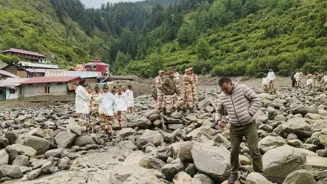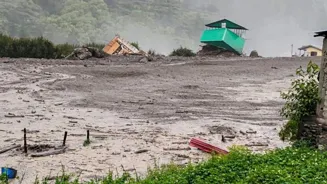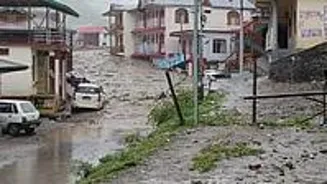A group of 28 tourists, originally from Kerala, has gone missing following a cloudburst that triggered severe mudslides in Uttarakhand, according to family
members on Wednesday. Of the 28, 20 are believed to be Kerala natives currently residing in Maharashtra, while the remaining eight hail from different districts across Kerala, PTI reported. She added that the couple's son last spoke to them a day ago. "They said they were leaving from Uttarkashi to Gangotri at around 8.30 am that day. The landslides occurred along that route. We have been unable to contact them since they left," she said Also Read: Uttarkashi Cloudburst: Chilling Video Captures Flash Flood Tearing Through Dharali in Seconds - Video She added that the Haridwar-based travel agency, which arranged the 10-day Uttarakhand tour, was also unable to provide any update on the group's whereabouts. "Their phones may have run out of battery by now. There is no mobile network in that region currently," she said. At least five people have been confirmed dead in the disaster that struck Dharali, an ecologically fragile region in Uttarakhand, following the cloudburst on Tuesday afternoon. Officials said nearly half of Dharali was buried under a massive mudslide of slush, debris and water. The village is a key stop on the route to Gangotri, the origin of the Ganga, and hosts several hotels and homestays. Locals and officials estimate that 20–25 hotels and guesthouses may have been swept away in Dharali alone. The entire local market, along with several residential structures, has been reported “completely swept away” by the torrent. Despite heavy rainfall and rugged terrain, rescue personnel from the Army, SDRF, and local police managed to rescue 70 people by midnight on Tuesday. Three NDRF teams were deployed immediately, and more have since been airlifted from Uttar Pradesh and Madhya Pradesh. The ancient Kalp Kedar temple, a significant spiritual site built in the Kature style and resembling Kedarnath, was buried under debris following the cloudburst in the Kheer Ganga catchment area. The temple, discovered in 1945, was located partially underground and was a popular pilgrimage spot. (With inputs from PTI)















